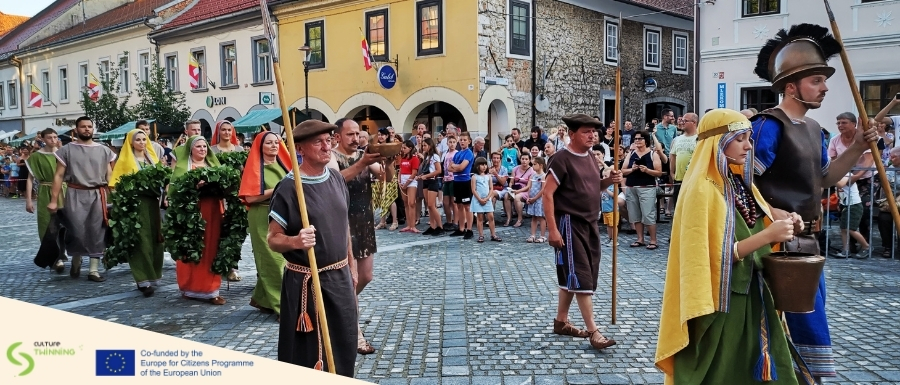The project Culture Twinning: Twinning Tourism Promoting Cultural Heritage, which started in 2018, is coming to an end with an upcoming last meeting online to close the project and sum up the results.
The project, funded by Europe for Citizens programme of the European Union, is led by the Municipality of Novo Mesto (Slovenia) in partnership with ALDA, the Development Centre of Novo Mesto (Slovenia) and the municipalities of Herceg Novi (Montenegro), Torun (Poland), Vilafranca de Penedés (Spain), Trnava (Slovakia), Langhenagen (Germany), Bühl (Germany), Bihać (Bosnia and Herzegovina).
The main objective of this two-year-long project was creation of a strong network of twinned towns to mutually promote cultural tourism and raise awareness among citizens on the importance of cultural heritage. This resulted in the creation of a network of towns that promote cultural heritage in a long-term perspective, and which developed opportunities for mutual understanding, intercultural learning, solidarity and social engagement.
The objective was successfully achieved!
Cultural heritage is more than historical monuments left behind from the past. It defines who we are as individuals, as communities, as regions.
Through project’s activities, partners had the opportunity to meet each other and present their respective towns and their cultural heritage and also to interact with local actors operating in the field.
All events implemented aimed at discovering the rich cultural heritage of each town of the network. In Italy an interactive guided tour for kids took place, in order to stress the importance of educating young generations on local cultural heritage, while in Herceg Novi the international conference “Strategic Tourism Development Based on the Valorization of Cultural Heritage” presented examples of good practice of proper valorisation of cultural heritage in European cities.
In Novo mesto a hackathon was organised where kids presented inspiring examples of good practice of innovative cultural tourism, as well as a visit to the 4th festival of Iron age living and cookery.
Another meeting was in the beautiful and historical city of Trnava, one of the oldest cities in Slovakia, where participants could enjoy the unique medieval atmosphere, culinary specialities and hospitality during the Traditional Trnava Market.
In Vilafranca exchanged ideas about the methods for creating cultural knowledge, enhancing culture in society and fostering the weight of culture in promoting quality cultural tourism. The participants learnt about the culture of “castellers” through a wide range of activities related to their world.
The sixth and the last meeting of the project, which contributed to the involvement of citizens and awareness of cultural heritage in several European partner cities through education and lifelong learning, took place in Bihać. The urban pulse of the city with an extremely diverse and unique history of different cultures and religions enriches the offer on the river Una.
The event has officially concluded this joint adventure, but the established connections between partners will live on and create common stories backed with richness of natural and cultural heritage. The project has reached an incredible number of citizens, more than 460 direct participants in the events and more than 40.000 indirect participants through the project’s website, partners’ websites, press conferences, news and articles.
***
Why CUT – Culture Twinning Project?
Cultural heritage consists of cultural and creative resources with a value for society that has been publicly recognised in order to preserve it for future generations. The rich and diverse cultural heritage of central Europe is one of the key attractions for tourists visiting the area. That is why local heritage has become an important economic factor. Efforts to preserve and utilise cultural heritage can help generate tour¬ism income in particular for remote regions, far from economic centres, rely on tourism-related services for employment. The sustainable use of cultural heritage is essential to ensure that central Europe will remain a popular destination to visit and to live in.
Through the exchange of good practice, experience and expertise of involved partners, we have increased involvement of citizens and raised awareness of the importance of Eu¬rope’s cultural heritage through different events and promotion. Through the activities of the project, we have strengthened the tolerance and mutual understanding between European citizens respecting and promoting cultural and linguistic diversity, while contributing to intercultural dialogue.
***
Useful links:
- Check the project’s website
- Read the information template to have an overview on all past events



